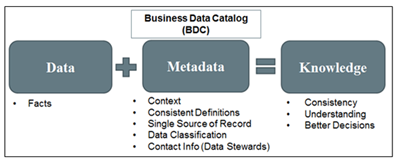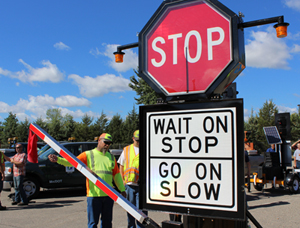 |
|

|
|

|
 |
TABLE of CONTENTS
 |
MnDOT appoints first Scholar-in-Residence |
By Shannon Fiecke, Research Services & Library

Greg Lindsey, a University of Minnesota professor, is serving as a Scholar-in-Residence with the Office of Transit’s Bicycle and Pedestrian Section. Photo courtesy of the University of Minnesota |
It’s back to school at the Minnesota Department of Transportation.
University of Minnesota Professor Greg Lindsey was recently appointed as MnDOT’s first Scholar-in-Residence.
Lindsey, who is spending his sabbatical on bicycle and pedestrian counting research projects, will be working in the Office of Transit’s Bicycle and Pedestrian Section until June 2016.
Since Lindsey was going to be spending much time at MnDOT anyway conducting his research, the agency invited him to be a Scholar-In-Residence and also office at MnDOT part-time.
“We’ll be working on institutionalizing bicycle and pedestrian counting — so local engineers and planners have evidence for planning and investing in new facilities and establishing priorities for investments to increase safety,” said Lindsey.
Lindsey will help MnDOT develop a district-based plan for permanent and long-term bicycle and pedestrian monitoring following new guidance in the Federal Highway Administration’s Traffic Monitoring Guide.
Lindsey’s appointment expands on MnDOT’s existing partnership with the University of Minnesota’s Center of Transportation Studies and builds on his work for the Minnesota Bicycle and Pedestrian Counting Initiative, a collaborative effort between MnDOT and the university. A video (Minnesota: Where every step counts) was produced to summarize the project.
“We are excited about this new collaboration with the University and believe it establishes an important precedent for the future,” said Commissioner Charlie Zelle.
This is believed to be the first time MnDOT has appointed an in-house scholar.
A former Humphrey School of Public Affairs associate dean, Lindsey specializes in environmental and transportation planning, policy and management. His current research involves non-motorized transportation systems. Partners in his research include MnDOT, the Minneapolis Department of Public Works, Transit for Livable Communities, and the Minneapolis Parks and Recreation Board.
“Lindsey’s work to institutionalize bicycle and pedestrian monitoring throughout Minnesota is central to our efforts to establish the evidence we need to maximize the efficiency of our investments in infrastructure and the safety of our transportation facilities,” said Zelle. |
 |
|

|
 |
TABLE of CONTENTS
 |
Co-workers from CO, Metro mourn loss of Dave Nyquist |
|
By Geometric Design Support Unit staff

Dave Nyquist, who died Jan. 10, worked in the Geometric Design Support unit at CO and the Metro District Pre-Design unit. Photo courtesy of Geometric Design Support unit |
Dave Nyquist, 51, an engineering specialist senior in Office of Project Management and Technical Support’s Geometric Design Support Unit, died Jan. 10. He was diagnosed with light-chain amyloidosis in mid-December and was working with medical professionals to determine a treatment plan to fight the disease when he died.
Nyquist worked for MnDOT for almost 30 years. He started his career in 1985 as a temporary laborer with the Metro District and moved to a permanent position in the Metro District Pre-Design unit in 1988. Most of Nyquist’s career was spent with Metro’s Pre-Design, where he became an engineering specialist senior in 2008. He left Metro to take a position with the Central Office Geometric Design Support Unit in 2011.
During Nyquist’s career, he became the go-to person for designers and project managers looking for geometric ideas. He wasn’t afraid to put pen to paper and sketch concepts, and no idea was too “out-there” to be considered, according to his colleagues.
“When a project brainstorm session was contemplated, the meeting had to include Dave,” said Tim Donovan, Nyquist’s friend and co-worker from Metro Pre-Design. “He was a machine when it came to cranking out ideas for an interchange replacement or a highway project. In the time it took any of us to prepare one stick drawing, Dave would have four or five, and would be looking for more paper, because he had more ideas.”
Friends also remember his sense of humor and ability to bring fun to the work place, including the Metro layout folding Hall of Shame, which led to a layout folding school for those friends who couldn’t properly fold a layout, and a daily lunch group.
“Over the years I worked with Dave and enjoyed his commentary on layouts, geometric design and politics,” said Chris Roy, a co-worker from both Metro and OPMTS. “It was funny how often all three would be discussed in one conversation.”
Nyquist was a loving husband to his wife Judy and a devoted father to Joshua, Rachel and Matthew. Outside of work, he enjoyed spending time with his family, coaching his kids’ teams, doing activities with his kids, camping, watching hockey and baseball, and bluegrass music. He especially loved hockey and was a referee and treasurer for the Minnesota Hockey Officials Association.
Funeral services for Nyquist were held Jan. 14 at the Fourth Baptist Church in Plymouth.
“Dave was a great friend and workmate,” said Brad Anderson, a co-worker in the Geometric Design Support Unit. “He had so much to contribute, and we all loved him and will miss him like crazy. He was such a good man.” |
 |
|

|
 |
TABLE of CONTENTS
 |
Business Data Catalog provides framework for access to agency’s records |
By Mary McFarland Brooks

Data terms, along with pertinent information or metadata, are published in the Business Data Catalog found on iHUB. |
Most of us have struggled, at some point, to find information about the multitude of subject areas the agency touches. Struggle no more.
In 2011 the flagship initiative, Data Business Plan, was created to address the concept that data is a valuable resource that needs to be reliable, timely and accessible.
To that end, in 2012 MnDOT established a data governance program, which:
- Structured data into data domains with multiple sub-categories (called subject areas)
- Created IT standards and processes
- Assigned staff to designated data stewardship roles
The Data Business Plan also called for creating a catalog to locate, access, assemble, share, manage and govern data. In late 2012, the agency partnered with MN.IT@DOT to implement the Data Business Catalog application. The application falls under the direction of data domain stewards and requires that designated subject area data stewards throughout the department identify and document data items.
“When we realize that data is an asset in itself, we begin to make data management decisions differently,” said Mark Nelson, Data Management coordinator.
These data terms, along with pertinent information or metadata, are published in the Business Data Catalog and made available to staff. The metadata elements for each data item include the approved term name, term definition, source of record, and data classification. Contact information of the responsible data steward(s) is also published in the BDC. Because the previous collection of data was spread among many different locations throughout the agency, the BDC is a valuable resource to assist all staff with managing and understanding the agency’s information.
“The BDC is proving to be a key tool for managing data as an asset, which is not only one of the principles of data governance, but also applicable to enhancing financial effectiveness,” said Nelson. “It will help us to prevent redundancy and to identify opportunities to leverage our investment in information technology.”
An Aug. 20, 2014 Newsline article about MnDOT’s new records retention schedule mentioned that the schedule is now organized by data domain and subject area and would soon be added to the BDC.
This has now been realized and with the records retention schedule in the BDC, users can search for records and achieve more reporting flexibility. Staff has the ability to get the complete MnDOT records retention schedule or generate reports only for records assigned to a particular data domain, subject area, or filtered by other criteria.
“Almost weekly my unit is asked to make a data set available to another application or group of people. The data being asked for is under a steward, who is the authority on the data and its usage,” said Charles McCarty, MN.IT supervisor. “Just this information on who the steward is saves countless hours over the course of a month in getting the change processes started. We recognized this would be key to the process of governance of the Data Business Plan, and it has proven to be.”
Additional information about the records retention schedule is available on MnDOT’s Records Management page on iHub.
Some enhancements were also added to the BDC application itself to boost its usability:
- Pages were created for publishing separate information and updates for data terms and records
- Static reports were replaced with more interactive, flexible, user-driven reports in the agency’s crystal reports web portal, http://webreports3/ceportal/
- Search capabilities were expanded so users can search for records in addition to searching within the name/title and description fields at the same time
For more information about the Business Data Catalog contact john.solberg@state.mn.us. Questions about the records retention schedule can be sent to charles.stech@state.mn.us. |
 |
|

|
 |
TABLE of CONTENTS
 |
Applications now accepted for 2015 research implementation grants |
|
By Shannon Fiecke, Research Services & Library

Last year, MnDOT Research Services funded the implementation of three automatic flagger assistance devices in District 3, which improved the safety of flagging operations in work zones. Photo by Nick Busse |
Do you have a great idea for how to do your job better, but lack the equipment and training to make it happen?
Infrastructure asset engineer Trisha Stefanski had been eyeing GPS-enhanced mowers that could alert highway maintenance crews to noxious weeds. Bridge waterway engineer Petra DeWall thought 3D sonar equipment would enhance MnDOT’s underwater bridge inspections. Both tools — funded last year through the MnDOT Research Implementation Program — are now helping crews perform their jobs with greater accuracy and efficiency.
MnDOT Research Services & Library is now accepting funding requests for 2015 projects that will implement new technology or research at MnDOT. The deadline for applying is Feb. 20, 2015.
Visit the MnDOT research collaboration IdeaScale web site to submit your idea.
Instructions:
- Enter your idea on the IdeaScale website by Feb. 20.
- You will receive an email link to an online questionnaire; fill out the questionnaire with your project information.
- An implementation plan for your project will be drafted by MnDOT Research staff and sent in a Word document for your final edits.
- The Transportation Research Innovation Group will hear a short presentation of the proposal on April 1.
|
 |
|

|
 |
TABLE of CONTENTS
 |
What’s new on the web |
MnDOT now on Instagram
You can now find MnDOT photos on Instagram, a social media program used to share photos and video. The MnDOT site can be found at www.instagram.com/mndot.
Check out the Instagram site from your home computer or personal mobile phone. Instagram is currently blocked from state computers.
New Library Materials posted on the web
New Library Materials are available at www.mndot.gov/library/newlibmat.html. This issue highlights the latest award that MnDOT Library received in 2014 and free downloads of American Association of State Highway and Transportation Officials electronic publications.
New Library Materials is a compilation of new titles and other resources added to the library collection during the previous month. If you would like to be added to the distribution list, contact pamela.m.gonzalez@state.mn.us or 651-366-3749.
Previous editions of New Library Materials are archived and available at www.dot.state.mn.us/library/recacq-archive.html. For other information requests, contact the Library at 651-366-3791 or e-mail library.dot@state.mn.us, or send requests via the Ask a Librarian web page. |
 |
|
______________________________________________________________________________ -->
| |
|



